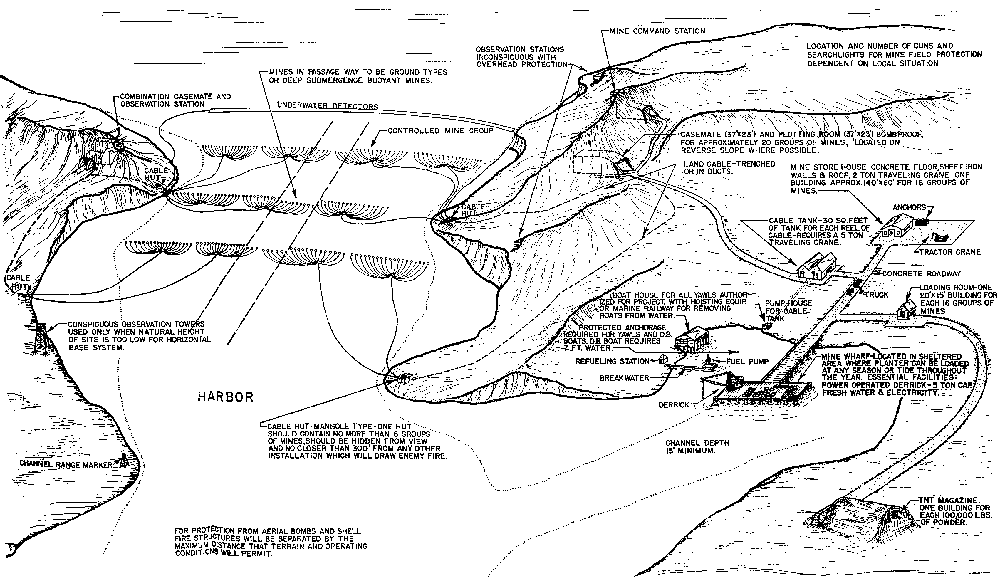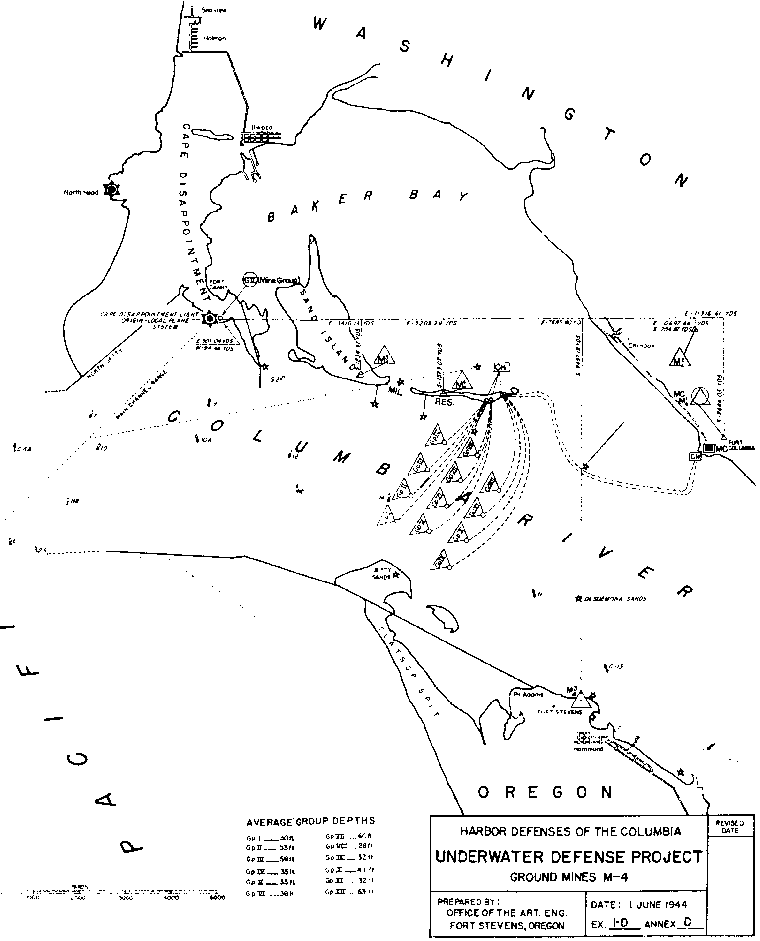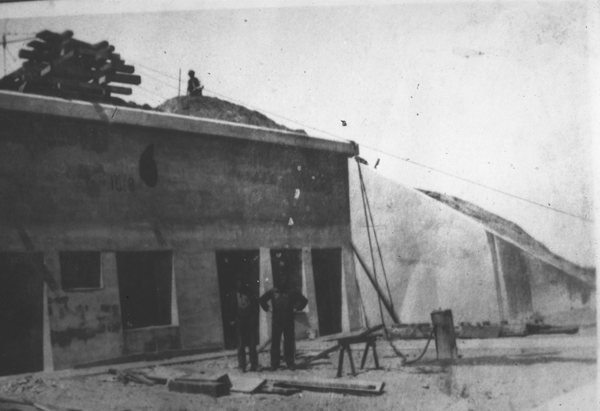Coast Artillery: Submarine Mine Defenses
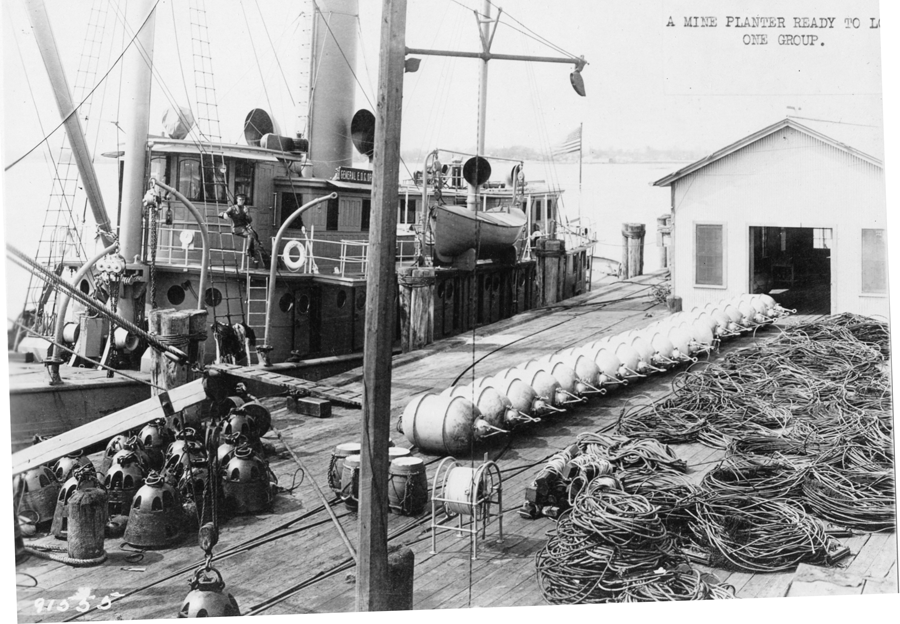
USAMP Gen. E.O.C. Ord at the dock, ready to load mines and associated equipment.
NARA Still Pictures, 111-SC-WWI, #91555.
Definition of a Controlled Mine (TM 2160-20, 1930) A controlled submarine mine, as employed by the United States Army, was a watertight steel case, containing explosive and a firing device, with a means for control of fire by electrical connection to shore. The case was of such size that it was held at a predetermined depth by the length of mooring rope that was attached to the anchor which retained it at the location at which planted.
The United States Army used controlled buoyant mines to defend American harbors during the period from the 1880s until early 1943. Some 4,000 controlled ground mines were used during the period 1943-1945.
Functions of Submarine Mines (TM 2160-20, 1930)
- To effect the destruction or serious damage of hostile vessels which approach within effective range.
- To supplement the offensive action of other weapons in repelling hostile attack.
- To prevent the close approach or entry into a harbor of hostile surface vessels under cover of night, fog, or smoke, when by reason of the invisibility of the ships from shore, other weapons are wholly or partially ineffective.
- To limit or prevent the navigation by hostile naval submarines of channels or water areas.
- To restrict the freedom of maneuver of hostile naval vessels in formation.
- By the morale effect of an unseen threat, to enforce a constant element of caution and uncertainty in the planning and execution of all hostile naval operations within the water areas known or believed to be protected by mine fields.
- To give warning of hostile submarine activities or of the presence of hostile surface vessels.
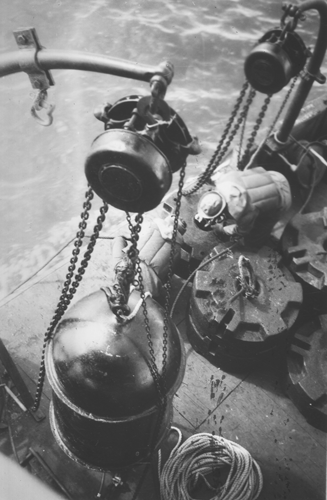
Mine ready to be planted on the deck of a Army mine planter
Controlled mines were used to close such portions of harbor entrances that led to channels required for the use of friendly naval forces and friendly commercial shipping, or included a debauching area required by naval forces. In addition, controlled mine fields were limited to distances not exceeding 10,000 yards from the shore and to depths not greater than 250 feet. The effective range was 2,000 yards from channel mouth inner limit, 8,000 yards from the outermost searchlight locations, with a minimum depth of 20 feet, and a maximum depth of 250 feet. The maximum current in the channel could not exceed 3 knots. The number of mines and their planting depth was determined by the locality to be defended.
Structures, Vessels and Equipment
For each defended harbor, one or more of each of the following was required:
- Mine casemate which housed the power and control equipment.
- Mine (torpedo) storehouse for the storage of empty mines and equipment.
- Loading room for assembling and loading the mines.
- Magazine for the storage of explosives.
- Cable tank for storage of cables under water.
- Mine wharf for loading the mines on the planter.
- Trackage (tramway) connecting the mine storehouse, magazine, cable tank, and mine wharf.
- Mine group commander’s station with plotting room
- Base end stations.
- Mine planting vessels, including the regular and auxiliary mine planters, distribution box boats, and motor mine yawls.
- Position finding equipment, including the base end observing instruments, mine group commanders telescope, plotting board, predicting device, stop watch, telephones, and telephone lines.
- Searchlights, for the illumination of the mine field at night. These may or may not have been separately assigned to the mine command.
- Rapid-fire guns for protecting the mine field.
The War Department policy was that the controlled mines, along with all essential accessory items required to plant and operate them, were to be stored locally, contiguous to the projects they were to be used in, in readiness for immediate use and in quantities sufficient to plant the mine field authorized by the project and provide maintenance of these projects after planting. In practice, most authorized projects did not have all the materials needed to plant a complete mine field at the sites they were to defend.
Mines proper were composed of the casing, explosive (gun cotton or dynamite before 1912, trinitrotoluene (TNT) thereafter) compound plug with mine transformer, moorings, and anchors. The unit for planting, called a group, consisted of 19 mines planted at intervals of 100 feet across the waterway to be defended, with submergence as required by tactical considerations. The mines in each group were numbered from left to right as viewed by an observer on the inshore side of the group. One group of mines thus defended 1,900 feet (18 intervals plus 50 feet to each flank). An appropriate number of mine groups to cover the length and breadth of the waterway provided the underwater defense. The groups of mines were numbered from left to right looking offshore, beginning with the most advanced line, if the project included two or more lines of mines. The mines were delineated by a numerical designation indicating displacement capacity. During this period there were two basic mine shapes: the spherical mine and the sphero-cylindrical mine
Control Devices. The 1930 single-conductor system consisted of 19 mines, 19 lengths of single-conductor cable leading from the group back to the distribution box which contained the selector and accessories, the single conductor cable leading from the distribution box to the terminal hut on shore, the lead-covered cable running in a conduit from the terminal hut to the mining casemate, and the instruments and wiring included on the operating board. In the older 19-conductor system, an operating board with its master block and 19 individual mine blocks was used to control each mine in the group.
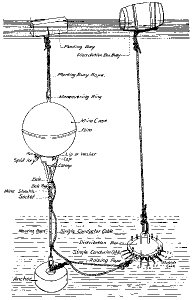
.
Power and Switchboard Equipment. The power system included a direct current (DC) generator (either directly connected to a stationary gasoline engine, or belt-driven by an oil engine), an 80-volt storage battery, motor-generating sets to provide alternating current (AC) for firing, a casemate transformer, a power panel to control direct and alternating current, and an interupter panel for the single conductor system.
Army controlled mines used direct current for operation, supervision, and signaling, and used alternating current for all firing. When a mine was fired, either by observation or contact, alternating current was sent though the selectors to the mine. Without the alternating current, the mines could not be detonated.
The Mine Flotilla: Mine Planters, DB Boats, and Yawls
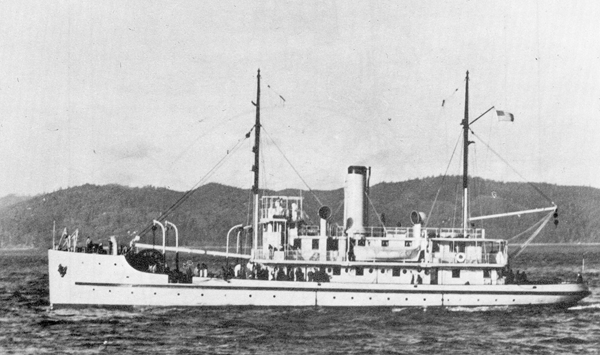
U.S. Army Mine Planter Franklin J. Bell in the Columbia River 1930s
The mine flotilla consisted of a mine planter, a distribution box boat (DB boat, also known as a L-boat after the numerical designation on the side of the boat), and two to four yawls. There were rarely enough mine planters for one to be assigned to each harbor that had mines. Often one or two mine planters were assigned to a major harbor. They would be called on to perform service in other harbors or in the laying and maintenance of the military underwater cable systems. Smaller harbors without assigned mine planters would be visited by a planter for practice, and during wartime after it had performed its duty at its primary station. Many harbor defenses used vessels that were jury-rigged to serve as makeshift mine planters and DB boats due to the lack of a sufficient number of actual army mine planters.
- Army mine planters were custom built after 1904. They had wide decks to hold assembled mines, and the necessary booms and davits for loading the assembled mines from the wharf and planting the mines out in the channel.
- The four mine planters ordered in 1904 were 150 ft. in length, 32 ft. beam, 14 ft. draft and 447 tons in displacement.
- The 1940 series of mine planters were 188 ft. in length, 37 ft. beam, 12 ft. 6 in. draft and displaced 1,320 tons.
- The ships had a wartime crew of two officers, 6 warrant officers, and 41 men.
- Usually the fleet would plant one group of mines at a time.
- Distribution box boats were smaller boats that held the distribution box while it was being attached to the cables as the mines were being planted. The DB boat had a large boom to hoist an assembled distribution box over the bow and lower it into the water.
- The mine yawls were typical small craft which were used to ferry ropes, cables, etc., from the mine planter to the DB boat or shore as needed.
Harbor Defense of the Columbia River Mine Facilities 1901-1910
Fort Columbia- casemate (old), mine wharf, torpedo storehouse
Harbor Defense of the Columbia River Mine Facilities 1911-1920
Fort Stevens- casemate (wood frame), mine wharf, cable tanks, torpedo storehouse, loading room
Fort Columbia-casemate (wood frame)
Harbor Defense of the Columbia River Mine Facilities 1921-1942
Fort Stevens- casemate (new), mine wharf, cable tanks, torpedo storehouse, loading room
Fort Columbia-casemate (new)
Harbor Defense of the Columbia River Mine Facilities 1943-1945
Fort Stevens- mine wharf, cable tanks, torpedo storehouse, loading room (new), fuze storehouse (Smur), TNT magazines, casemate (not used)
Fort Columbia- casemate (gas-proofed with plotting room)
- Mine Casemate at Fort Stevens (Greg Hagge Collection)
- Playing out the mine cable (Greg Hagge Colection)
- Mines at Fort Stevens (Greg Hagge Collection)

